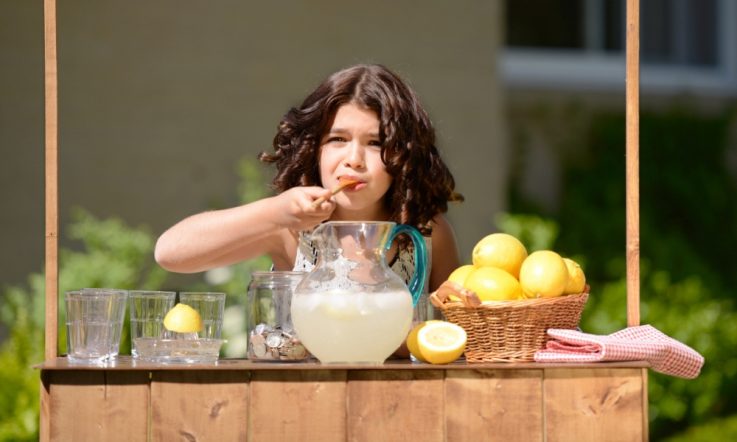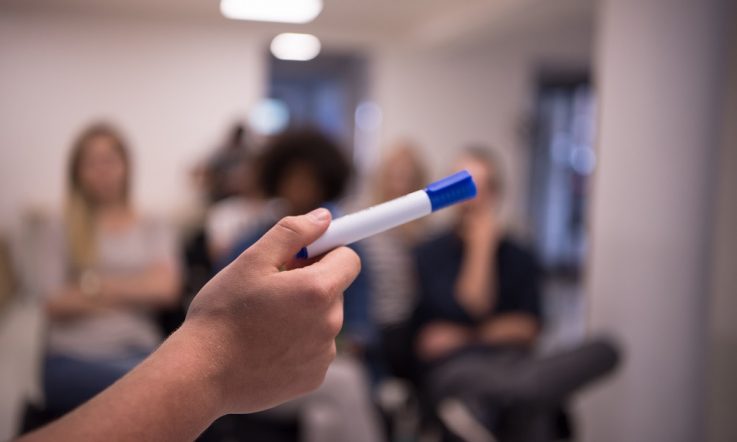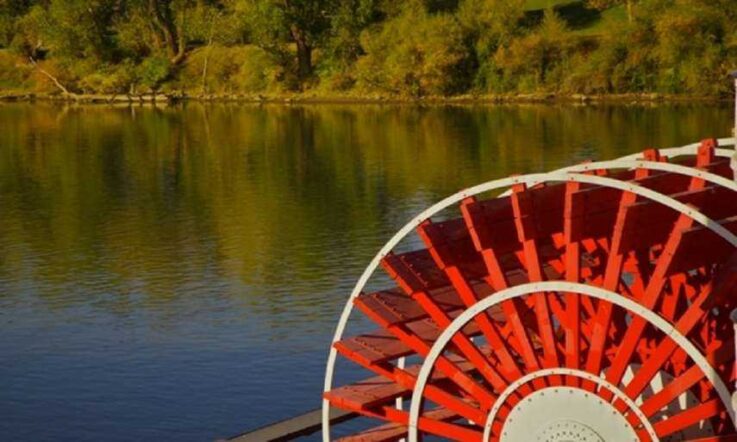This podcast from Teacher magazine is supported by Bank First. Bank First is proud to support the financial wellbeing and professional development of the education community. Visit bankfirst.com.au to find out how they can help you reach your financial goals.
Hello, I'm Jo Earp. The Paradigm Shifters: Entrepreneurial learning in schools is a recent Australian initiative that brought together the Mitchell Institute, Victorian Association of State Secondary Principals and the New South Wales Secondary Principals' Council. The year-long trial made students the key partners in designing and implementing entrepreneurial learning, using principles developed by Professor Yong Zhao – he also acted as a critical mentor. Benefits reported by participating students included increased confidence, greater resilience, stronger collaboration skills and improved empathy. At the end of last year I visited Western Port Secondary College in Victoria – one of 21 government secondaries involved in the trial – to talk to assistant principal Hannah Lewis and student Harry Hainsworth. Hannah explains the project started with the Year 8 cohort and the Year 8 team of leaders and teachers.
Hannah Lewis: We had developed a program called Infinity, based around the concept of infinite possibilities, and that was our target group. However, we did find that our kids needed a lot of cultural immersion in a broader sense of the term. That when it came to them devising their own individual projects, they really weren't in that headspace. We needed to do a lot of unpacking, a lot of immersion work and we had some hiccups along the way, but that's part of entrepreneurial learning – failing and learning from it.
I trialled it intensively with a group of 25 students (a class) and I developed a program, all the assessment around their social capabilities, and they drove it as leaders, and then they worked with the broader cohort.
Jo Earp: One of the things, as you mentioned there, that's really important is the students driving the learning. The process involves the students choosing projects of interest, I guess. What did they work on here at Western Port?
HL: The four key projects were, we decided to work within umbrellas of existing spaces [at the school] that had so much untapped potential, but the actual design of the products within those projects were the kids' initiative.
One of the projects was a sculpture park and one of the important things was to work with outside, external mentors. There were a group of students that nominated to be involved in developing the Western Port Secondary College Sculpture Park. We visited McClelland Sculpture Park and worked with the education officer there as our mentor. The kids looked at the inquiry questions ‘what is the role of the artist in society?' and ‘why is creativity important?' and we had some really rich discussions around some of the sculptures in the park. … And just the unpacking of ‘what does this mean?' and the kids identifying a sculpture that resonated for them and why, and what they saw in that sculpture.
Then when we came back to school they took part in a workshop, a pop-up maquette workshop – they used card and cut and made these pop-up maquettes. They then created (the girls who were driving the sculpture park) created a mini pop-up exhibition, which went from the Year 8 centre to the staffroom and people got to vote on the People's Choice Award and we also had a judging. So, that was a trial for setting up the actual sculpture park. And then the girls did the whole shebang – they developed a map of the sculpture park, they developed application forms, they were involved in the judging of the sculptures. So, various groups from right across the school created these sculptures. We had our outreach kids working on a sculpture using recycled materials on our bike shed. We had our Aboriginal and Torres Strait Islander kids creating Bundjil's Nest out of recycled metal and wire and then transporting that across the school.
… The girls involved [who were leading the project] were incredibly good communicators but really anxious, they suffered from some genuine anxiety, and because they felt empowered by what they were doing, they developed their confidence to such a point that they were able to open the official VC Art Exhibition and Sculpture Park and speak to a broad, cross-section audience about their project. So, the development of their social capabilities and confidence was absolutely mind-blowing.
The other one was the school market. Our students coordinated with groups from right across the school to organise and run our first school-community market. Everything was either made, grown or baked. So that was a really big logistical exercise and that was hugely successful. Once again, all of the Year 8s were involved in developing and trialling food stalls and running them, but then we had groups from right across the school: kids funded through disabilities and impairments were making amazing products out of recycled timber; we had hands-on learning, our school-based apprenticeship parks and gardens group, selling plants and running a sausage sizzle; we had art students from Year 8 doing ceramics; we had the girls group that's run by our wellbeing team, the kids who are a bit isolated, they produced succulents in tea cups. So, it was a massive occasion, and that was combined with the opening of the sculpture park.
The other project which has been really integral to this year [2017] was the development of our Bush Block. That's an area of 0.8 of a hectare on the school site that has significant remnant Indigenous habitat and it abuts the habitat of the powerful owl, which is federal government-owned land behind the school, behind this Bush Block. We did extensive immersion work, working with mentors Karen Anderson, the director of Balnarring Preschool, who is a national leader in terms of the nature play program, and a local landscaper and Indigenous restoration contractor, he also has a nursery, in teaching the kids about the plants and the animals and the relationship between them. We took a group of six boys to Balnarring Kinder – and Harry can talk about that later. Karen Anderson works with Boon Wurrung elders teaching language and culture and the kids go to the beach rain, hail or shine, twice a week. So we did a lot of immersion work around the Danish model of nature play … and now this year the students have designed a program for mid-primary students.
The students have devised this program and are going to write it up and try and link it to the Australian Curriculum appropriate to that age group, so that there is some integrity around the learning. They've chosen [what spaces] they're going to use within the space. [We've] extended it to the environment group and we've had 60 students from across the school participating in that. So that will be a long-term project.
… And also we had a group designing an outdoor classroom shelter that fitted into the environment and space. So, it had an organic form of a leaf as the roof with a central drain that went into a tank. It would provide a shelter space where you could take science groups or it might be an art group doing sketching, it might be a performance group or kids writing poetry, or it might be senior biology students doing quadrant research. But, just creating a dry, undercover area.
JE: Student Harry Hainsworth was in Year 8 and 9 when he took part in The Paradigm Shifters. He was involved in Western Port's nature play and bush block project. I asked him what was different about this way of teaching and learning.
Harry Hainsworth: Well, the learning perspective of it was, it was mainly student-led but it wasn't one student [saying] ‘you have to do this'. The groups that you were put in had different ways of leading this entire thing. … Also a difference between it Miss Lewis wasn't a teacher but more of a facilitator. So, if you went to her with a problem – which I did quite frequently – it would be bounced back with ‘well, how are you going to solve this problem?'
Earlier in the year we also had another problem where (and I'm not quite happy with this), but with the environment group we had a large variety of Year 7 and 8s. But, the problem is they weren't listening. I got to the point where I had to raise my voice, which I'm not happy about, but it's the fact that if you want a project to go somewhere you need everyone to contribute. It doesn't matter on the variety of people you have – you can have 100 people and two people could be slacking off, but that 100 could still not work if those two people slack off. You need everyone on their game and working at the best of their ability for the project to go on. … Along with working with a group, you had to try and figure out everyone's weaknesses, strengths and what they liked doing.
JE: So, as a student then it's unusual, you kind of become negotiators then in how you're going to go forward. From the teacher perspective – what about the teaching style? One of the things was standing back?
HL: Harry had learnt, teacher as a facilitator, he understood the language, and we did a lot of language immersion around entrepreneurship and he just said ‘no, this is not on, Miss Lewis has already spoken to you and told you, she is a facilitator, she doesn't want to have to deal with behaviour issues' and they just went silent. It was like ‘what's this? A student is actually telling us what to do'. But it was really powerful because it was coming from a peer.
One of the other things that we did with this group last year was peer feedback. I got the students to sit with someone from the group and give them really honest and straightforward feedback about an area they needed to develop and a strength. I thought they'd do it for two minutes – they treated it incredibly seriously and they had half an hour conversations where they sat, earnestly talking about what they had perceived in their peers. I had mapped their social capabilities, a whole list of things from ‘well developed', to ‘developing', to ‘not evident'. So, things like ‘the ability to listen to others', ‘the ability to work as a team and collaborate'. I ticked them all off and then I got them to do a self-reflection, and theirs matched mine. The self-awareness – we dumb kids down all the time – their self-awareness and knowledge about themselves and knowledge of each other is such a powerful thing. And we had to do a lot of work around: Okay, how is this evidenced? What are we looking for them to demonstrate? And the development of them as young people was phenomenal, you don't see that when you've got them behind desks in a mainstream classroom, learning from textbooks and following a rigid curriculum. It was really powerful stuff.
HH: Also along with this, you can see a side that you've never seen of anyone. You've got students who are now realising what they're capable of. … These entire projects also show a creative side to everyone. So instead of doing what Miss Lewis said – having a book and then saying ‘look we have basic ideas' – we were able to go into more complex ideas.
JE: What was it like to have that expertise – you're used to working with the teachers aren't you, but what was it like to have the outside experts in, Harry?
HH: You see, that was, it's sort of like when you go out for a job and then you've got someone who's like, you've got your main mentor who's teaching you, but you've also got a side mentor which gives you little notes and hints for things. So, meeting up with Karen [Anderson] was … she was giving us little hints throughout the day for our project, but as soon as we sat down with her at the table we were flooded with ideas, hints, knowledge that we could use for our project.
JE: Now, the opportunity to network, again, with the experts, but also students from other participating schools. What were benefits of that, linking up with other schools involved?
HL: Well, we worked with 11 other schools from Victoria and they were schools from a broad demographic – from kids from high-rise flats to select-entry schools like Melbourne High. The kids, where they came from, who they were, didn't matter, they found points of connection right at the very first meeting with [the Origin Foundation] when everybody was very green, and each school talked a bit about the projects and they rotated between groups.
From my perspective, it was meeting other students from quite different environments. We made a bit of a connection with Fitzroy High – very different curriculum, different demographic, different school, high-density school, very little land around the school, whereas we've got all these green spaces and wetland and bush. They're very keen to come here and visit and I'm keen to take the students up there, because our kids one day may move to the city and, you know, they don't have that city experience. And the kids from the school just near the freeway in Flemington, a lot of those kids grow up in high-rise flats, refugee families. So, it's that cultural immersion that's so important, whether it's culture to do with the land, the environment, how we use it – that sort of literacy is so important. You see the kids benefit from that experience of going into a different environment and learning about the issues that other schools face.
JE: So, there were a lot of benefits then and it's been a great couple of years so far. That's not the end of it – the research portion showed a lot of the principals and the teachers involved are keen to embed it further. So, what are the plans for 2018 then?
HL: I'm stepping away from the assistant principal job and I'm being employed two days a week just to focus on entrepreneurial learning. We've also been successful in being accepted as part of a project between the [Victorian] State Library and the Australian Learning Lecture and we're going to be trialling a ‘passion index' trial, passion toolkit. So, we'll be focusing on Year 8 again to look at how we can use this toolkit to continue to roll out entrepreneurial learning.
But there are also other areas within the school. We do a feasibility study as part of Project 9, where the students have to design something for their community. It might be a skate park, it might be a park, or whatever. At Year 7 they do a passion project. Students in VCAL do community-based projects. There are lots of other natural fits for entrepreneurial-style projects.
We've had these umbrellas, and they will continue, but we want to get students to a point where they can come up with entrepreneurial projects, generally, but not necessarily, with a social entrepreneurship focus. Because, it is about building kids' capacity to be part of a community, to work as a team, to collaborate, be creative, not about just making money – that might be something that they do in the process – but it's about giving back to the community and creating something that benefits the community. That's a big part of it.
Working with Yong Zhao as a mentor was also important for our kids, they had a Skype session with him. So, there's lots of fits right across the school, but it's also about getting staff up to speed. … So it's about trying to map it, bring it all together, make sure that the students are driving it, that it's not dependent on one pioneer.
That's all for this episode. To find out more about The Paradigm Shifters initiative, head to teachermagazine.com.au. To keep listening or download all our podcasts for free – including Episode 13 of our series on Global Education which focused on entrepreneurship education in Finland – head to acer.ac/teacheritunes or SoundCloud.com/teacher-acer.
You've been listening to a Teacher podcast supported by Bank First. Bank First has been committed to the education community since 1972 and is proud to be invested in you. Visit bankfirst.com.au to find out more.
In this podcast, Harry Hainsworth and Hannah Lewis both talk about the value of external mentors and experts. Think about your own context: How often do you give students the opportunity to build links and work with mentors and experts from the community? How could your school make more of the expertise that exists outside the classroom?
One aspect of The Paradigm Shifters initiative was networking days bringing together staff and students from participating schools. How could you develop student learning partnerships with other schools in your local community?



